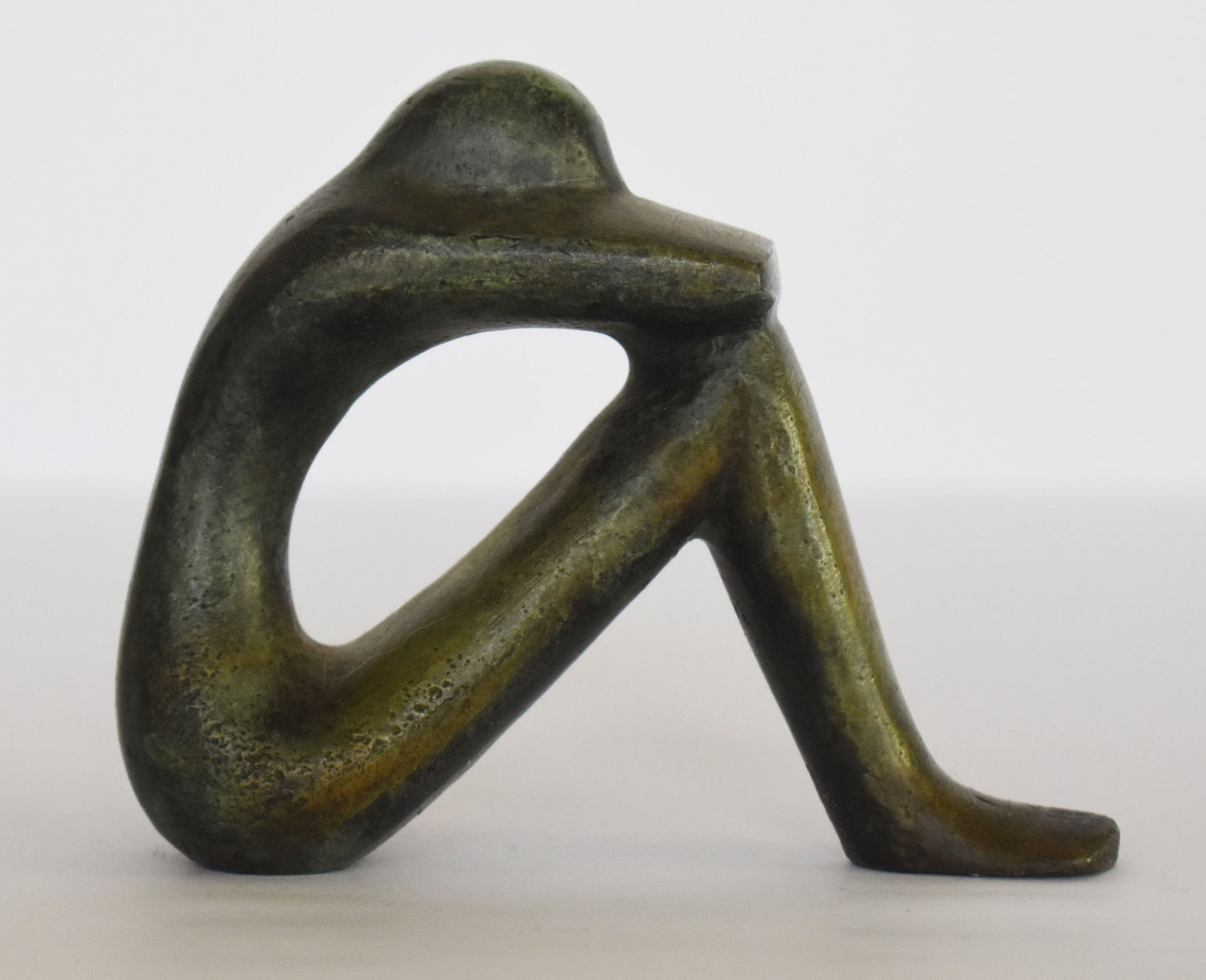Gallery Demeter
Cycladic figurine - ancient Greek reproduction - pure Bronze Sculpture
Cycladic figurine - ancient Greek reproduction - pure Bronze Sculpture
Regular price
€129,90 EUR
Regular price
Sale price
€129,90 EUR
Unit price
per
Tax included.
Shipping calculated at checkout.
Couldn't load pickup availability
Item Specifics
Condition: New, Made in Greece.
Material: Pure Bronze
Height: 7,5 cm - 2,95 inches
Width: 9,5 cm - 3,74 inches
Length: 3,3 cm - 1,18 inches
Weight: 465 g
The ancient Cycladic culture flourished in the islands of the Aegean Sea from c. 3300 to 1100 BCE. Along with the Minoan civilization and Mycenaean Greece, the Cycladic people are counted among the three major Aegean cultures. Cycladic art therefore comprises one of the three main branches of Aegean art.
Cycladic sculptures
The best-known art of this period are the marble figures usually called "idols" or "figurines", though neither name is exactly accurate: the former term suggests a religious function which is by no means agreed on by experts, and the latter does not properly apply to the largest figures, which are nearly life size. These marble figures are seen scattered around the Aegean, suggesting that these figures were popular amongst the people of Crete and mainland Greece. Perhaps the most famous of these figures are musicians: one a harp-player the other a pipe-player. Dating to approximately 2500 BCE, these musicians are sometimes considered “the earliest extant musicians from the Aegean.”
Marble harp Player (EC II; Badisches Landesmuseum, Karlsruhe)
The majority of these figures, however, are highly stylized representations of the female human form, typically having a flat, geometric quality which gives them a striking resemblance to today's modern art. However, this may be a modern misconception as there is evidence that the sculptures were originally brightly painted. A majority of the figurines are female, depicted nude, and with arms folded across the stomach, typically with the right arm held below the left. Most writers who have considered these artifacts from an anthropological or psychological viewpoint have assumed that they are representative of a Great Goddess of nature, in a tradition continuous with that of Neolithic female figures such as the Venus of Willendorf. Although some archeologists would agree, this interpretation is not generally agreed on by archeologists, among whom there is no consensus on their significance. They have been variously interpreted as idols of the gods, images of death, children's dolls, and other things. One authority feels they were "more than dolls and probably less than sacrosanct idols."
Suggestions that these images were idols in the strict sense—cult objects which were the focus of ritual worship—are unsupported by any archeological evidence. What the archeological evidence does suggest is that these images were regularly used in funerary practice: they have all been found in graves. Yet at least some of them show clear signs of having been repaired, implying that they were objects valued by the deceased during life and were not made specifically for burial. Furthermore, larger figures were sometimes broken up so that only part of them was buried, a phenomenon for which there is no explanation. The figures apparently were buried equally with both men and women. Such figures were not found in every grave. While the sculptures are most frequently found laid on their backs in graves, larger examples may have been set up in shrines or dwelling places.









